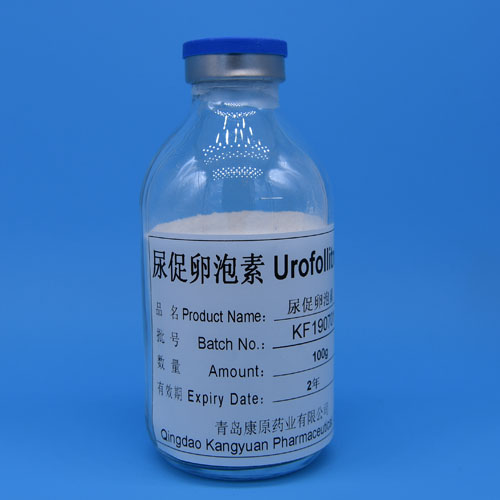In the ever - evolving landscape of reproductive medicine, Urofollitropin
has emerged as a key player, offering hope to countless individuals and couples
struggling with infertility. This article will explore the multifaceted world of
Urofollitropin, its functions, applications, and why it has become a go - to
treatment option for many.

Urofollitropin, a highly purified form of follicle - stimulating hormone
(FSH), is derived from the urine of post - menopausal women. It plays a
fundamental role in the process of follicular development in the ovaries. By
binding to specific receptors on the granulosa cells within the ovarian
follicles, Urofollitropin stimulates the growth and maturation of these
follicles. This is a crucial step in the ovulation process, as mature follicles
are necessary for the release of a viable egg.
One of the primary applications of Urofollitropin is in the treatment of
female infertility. For women with ovulatory disorders such as polycystic ovary
syndrome (PCOS), Urofollitropin can be a game - changer. PCOS is characterized
by hormonal imbalances that often lead to irregular or absent ovulation.
Urofollitropin helps to regulate the ovulatory cycle by promoting the growth of
follicles, increasing the chances of successful ovulation and subsequent
pregnancy. Clinical studies have shown that in PCOS patients, treatment with
Urofollitropin can result in ovulation rates of up to 80%, and pregnancy rates
of around 30 - 40% after a few treatment cycles.
In addition to treating ovulatory disorders, Urofollitropin is also an
essential component in assisted reproductive technologies (ART) such as in -
vitro fertilization (IVF). In an IVF cycle, the goal is to stimulate the ovaries
to produce multiple mature follicles. Urofollitropin is administered in
carefully calibrated doses to achieve this. By promoting the growth of multiple
follicles, it increases the number of eggs available for retrieval, which in
turn improves the chances of a successful IVF outcome. For example, in a well -
controlled IVF program using Urofollitropin, the average number of eggs
retrieved per cycle can range from 8 - 15, significantly enhancing the
probability of obtaining viable embryos for transfer.
Compared to some synthetic FSH preparations, Urofollitropin has certain
advantages. It has a more natural composition, closely mimicking the body's own
FSH. This can lead to a more physiological response in the ovaries, reducing the
risk of over - stimulation. Over - stimulation of the ovaries can cause serious
complications such as ovarian hyperstimulation syndrome (OHSS), which can be
life - threatening. With Urofollitropin, the risk of OHSS is relatively lower,
making it a safer option in many cases.
However, like any medication, Urofollitropin is not without potential side
effects. Some common side effects may include injection site reactions, mild
abdominal discomfort, and in rare cases, mood swings. But with proper monitoring
by a qualified fertility specialist, these side effects can be managed
effectively. The benefits of Urofollitropin in helping individuals and couples
achieve their dream of parenthood far outweigh these potential drawbacks.
In conclusion, Urofollitropin has revolutionized the field of reproductive
medicine. Whether it's helping women with ovulatory disorders conceive naturally
or playing a crucial role in assisted reproductive procedures, its significance
cannot be overstated. If you or someone you know is struggling with infertility
and considering treatment options, Urofollitropin may be a viable solution.
Don't hesitate to reach out to our team of experts at Kangyuan. We are dedicated
to providing you with the most up - to - date information and personalized
treatment plans to help you on your journey to parenthood.